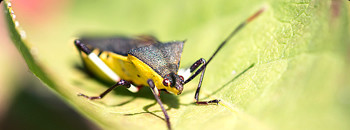Your lawn and garden gets hungry too! Fertilizer provides the ideal food to your lawn but many don’t know when or how often it should be done. How fertilizer savvy are you? Read below and find out!
It is best to fertilize your lawn at the beginning of each summer. True or False?
False. Late spring and early fall are actually the best times to fertilize. Fertilizing your lawn in the late spring helps strengthen grass roots and sets them up for successful growth. Fertilizing while your lawn is actively growing provides the greatest results. On the other hand, fertilizing in the late fall provides your lawn with the nutrients it needs to survive winter. However, no two lawns are alike and each requires a different schedule. For additional questions, talk to your local lawn care or landscape professional, a local independent retailer, or your county extension service.
Three ingredients are present in most fertilizers: nitrogen, phosphorus and potassium. True or False?
True. There are several types of fertilizer and they come in numerous forms (powder, granular and liquid), but nearly all contain these three principal elements. If soil lacks any of these, plant growth will suffer. While varying amounts of these ingredients are included in every batch of fertilizer, each plays a vital role in providing plant health. A soil test can help determine the right amount of nutrients needed for your lawn. For example, higher amounts of nitrogen promote protein and chlorophyll production, encouraging the growth of leaves and stems. Higher amounts of phosphorus result in more flowers and healthier roots. And lastly, potassium thickens stems and leaves. This goes to show just how important nitrogen (N), phosphorus (P) and potassium (K) are to creating a healthy lawn or garden!

